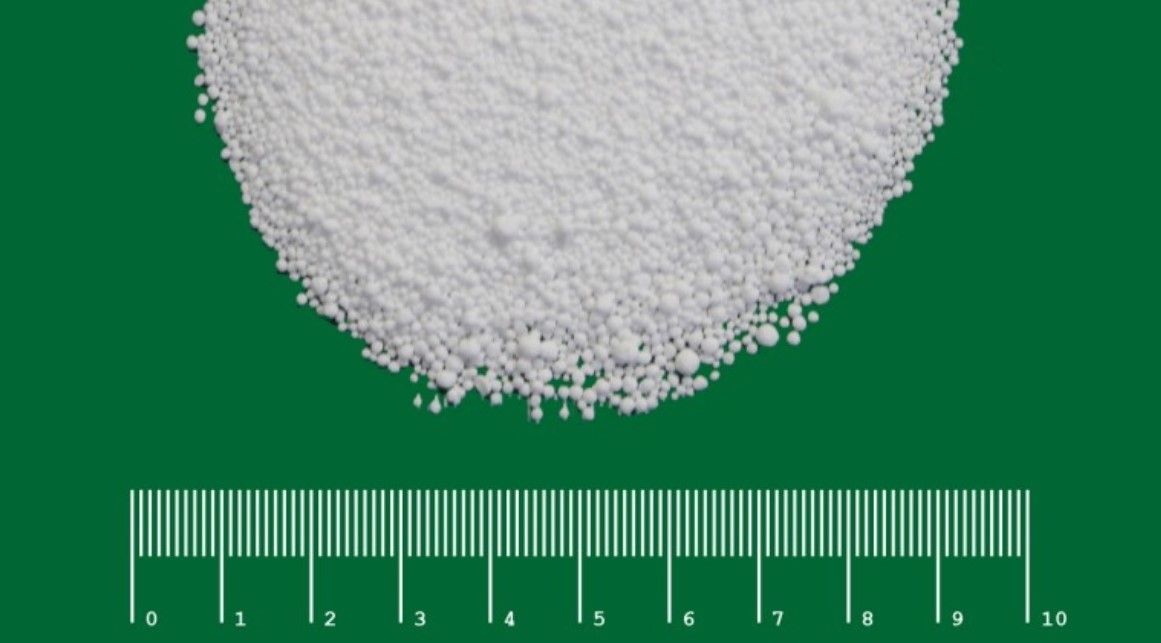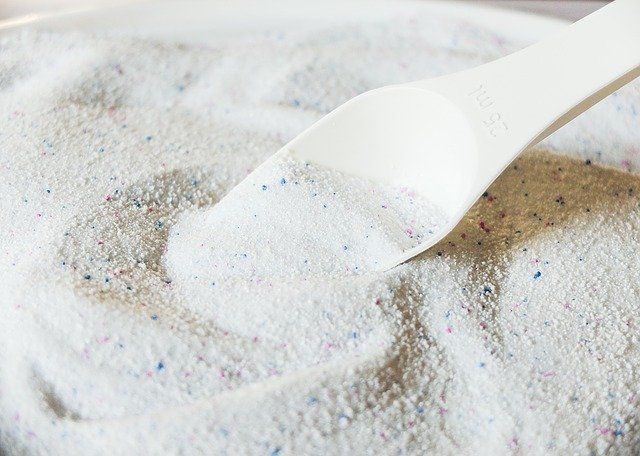Of the thousands and thousands of chemical raw materials used in industry, one of the most well-known, yet least understood, is potassium carbonate.
Potassium carbonate has the chemical formula K2CO3, but is also called dipotassium carbonate, carbonate of potash, pearl ash, salt of tartar, salt of wormwood, or simply potash.
The word potash is used for all sorts of mined and manufactured salts which contain potassium in a water-soluble form. This is because before industrialisation, these products were made by soaking plant or wood ash in a pot.

Today, potassium carbonate is produced by reacting potassium hydroxide with carbon dioxide. As it crystallizes the solution forms potash hydrate, which when heated to more than 200°C creates K2CO3. It is an anhydrous salt – and it does taste salty.
In this basic form, potassium carbonate will appear as colourless crystals, but is usually supplied as a white powder.
It is such a well-known chemical product because it has so many uses. For example, it can be found in fire extinguishers, as a source of potassium for crops and livestock, as a drying agent in the pharmaceutical industry, as a water softener, as a processing agent in food preparation, and in the manufacture of glass. However, it is most commonly employed in the production of soap.
Its power as a detergent ingredient is based on how potassium carbonate forms an alkaline medium which makes it capable of removing unwanted, insoluble stains. It also acts as a builder owing to its higher solubility at low temperatures.

At its simplest definition, soap is the chemical reaction between sodium hydroxide and a fat or oil. The product of this reaction is glycerin (a moisturizer) and sodium salts of fatty acids (soap). Potassium carbonate’s usefulness as a raw material for soap is that instead of burning alkalis and then converting fatty acids to soap, the fats are neutralized by both the sodium and potassium. It is a process that is strong enough to remove even insoluble oils, such as vegetable oil, sweat stains, and engine grease - even in particularly acidic environments or with hard water.
Beyond hand soaps and detergents, potassium carbonate is also a practical ingredient for household cleaning products, as it can remove the magnesium and calcium rings which form around a bath. It is a chemistry based on neutralizing the mineralized ions in the water.

However, it is in detergents where potassium carbonate is most notable - although, there is more to washing clothes than simply mixing in some K2CO3.
For instance, particle size can play a significant role in potassium carbonate’s cleaning properties, as it is key to effectively dispensing, dispersing, and dissolving powdered laundry detergents.
A slow dispensing powder allows for the formation of a residue in the drawer of many automatic washing machines. This problem is typically the result of a powder with a medium to high bulk density.
Research into this topic has found that “specific grades of potassium carbonate, when added as a separate particulate ingredient (post-dosed) to an already formulated particulate detergent base composition, significantly improve the dispensing times of the whole detergent composition.”

Although the effects of eutrophication as a result of detergent residues entering rivers and streams is leading some detergent manufacturers to increase their usage of alkali metal carbonates (especially sodium carbonate), potassium carbonate remains an important laundry ingredient. This is particularly true in hard water areas, as K2CO3 is an excellent water softener.
Despite being known as a useful cleaning ingredient since ancient times, the use of potassium carbonate in laundry products and household cleaners is still being researched today.
It is a chemical product that people use daily, and yet somehow remains anonymous. A little-known chemical in everyday modern life - one that helps our food taste better, is a raw material for glass making, and helps put out fires. But ultimately, potassium carbonate is a literal solution for washing clothes.
If you would like to know more about the cleaning power of potassium carbonate or if you wish to source good quality industrial chemicals, such as K2CO3, the visit AG CHEMI GROUP.
Photo credit: Michael Dziedzic on Unsplash, Bekky Beks, Frank Habel from Pixabay, Karolina Grabowska from Pexels, & AG CHEMI GROUP.